Irga is a deciduous shrub or tree. Canada is considered the birthplace of the plant, and the culture is widespread throughout the Northern Hemisphere. In Russia in the 19th century, I.V. Michurin began to grow shadberry. It also has other names - northern grapes, pyrus, wine berry, karinka.
| Content:
|
Irga is a self-fertile plant. The crop is characterized by rapid growth, winter hardiness, regular fruiting, long life expectancy, 60-70 years. Full productivity of the plant occurs in the 8-10th year of cultivation and lasts 20-30 years. Up to 15 kg of crop is harvested from ten-year-old plants.
Irga perfectly satisfies hunger and strengthens the immune system. In the northern regions of the country it is used as a rootstock for dwarf pears and apple trees. Recommended for landscaping industrial areas.
Types and varieties of serviceberry
Among several dozen species of serviceberry, the most common are:
- Irga canadensis
- Irga alnifolia
- Irga ovalifolia
- Irga round-leaved or common
Irga canadensis
The Canadian serviceberry (Amelanchier canadensis) attracts gardeners primarily for its large fruit, taste, flowering and ripening times.
The Canadian serviceberry is a large shrub up to 6 m tall or a tree 8-10 m high. Thin, slightly drooping shoots form a rounded crown. Blooms for 7-10 days. The fruits are round, dark purple with a bluish bloom, and sweet. The yield is average - 5-6 kg per bush.
Frost-resistant. Low demands on soil and moisture. It grows well on calcareous soils and tolerates slight salinity. Photophilous, grows quickly. It tolerates gas and smoke in the city well and effectively reduces the noise level. It differs from other representatives of the genus in being more decorative throughout the season.
Varieties of Canadian serviceberry
All varieties of Canadian serviceberry are light-loving, frost-resistant, and drought-resistant. They easily adapt to urban conditions and are used in landscape design as a decorative element.
Forestburg
|
In the photo Iga Forestburg.The bushes of this variety are spreading. The berries are suitable for processing and fresh consumption. |
The variety is resistant to diseases and pests. Attracts gardeners with its decorative properties at any time of the year.
- The height of the multi-stemmed shrub is 8 m.
- Blooms at the end of May, bears fruit at the end of July. Maturation is friendly. Berries appear 3-4 years after planting.
- The diameter of the berries is 13-16 mm. The brush contains 8-10 pieces. The color of the fruit is blue-black with a waxy coating. The pulp is tender, sweet, juicy.
- Productivity 6 kg per adult plant.
- The amount of root shoots is small.
- The culture prefers sunny or slightly shaded areas. It grows better on sandy loam or loamy, moderately moist soils; with a lack of moisture, the quality of the fruit decreases.
- Frost resistance - 40°C (climatic zone 3).
Martin
|
The peak yield of the Martin variety occurs 6-8 years after planting. Universal use: fresh, for making preserves, jams, and also for drying. |
- The height of the multi-stemmed shrub is up to 3 m. The crown diameter is 4 m.
- Flowering occurs in May, fruiting in June. Maturation is friendly.
- The berries are large, up to 18 mm in diameter, spherical, dark blue. The taste is excellent.
- Productivity is above average.
- Prefers sunny or slightly shaded areas.
- Frost resistance - 40°C (climatic zone 3).
“Martin is an excellent productive variety of serviceberry. I purchased seedlings from local gardeners. I liked the description and photo of the culture. It began to bear fruit in the third year after planting. The harvest surprises with its constant ripening: every June, almost at the same time. The advantage of the variety is its collective ripening. In my opinion, this is the best variety of serviceberry for the Moscow region. And most importantly, the berries are very tasty and aromatic, and also healthy!”
Ballerina
|
In the photo there is a variety of irgi Ballerina.Thanks to its abundant large flowers and riot of autumn colors, it is considered one of the best decorative varieties. |
Irgu Ballerina is often used for landscaping various areas. The variety is unpretentious, quickly adapts to unfavorable habitats, and is an excellent honey plant.
- Tree-like bush with a graceful crown up to 6 m in height. Growth is moderate.
- Blooms in April-May, bears fruit in early July. Fruiting is long lasting.
- The berry is large, tasty, sweet and juicy. Diameter 10-13 mm. The berries are characterized by sweetness and an original almond note. As the fruits ripen, they change color from dark red to blue-black.
- Doesn't give escape.
- Can grow in sun or partial shade. On fertile soils, the yield increases significantly. It tolerates temporary drought well, but loses the quality of the crop, so it needs regular watering.
- Frost resistance -43°C (climatic zone 3).
We used Irga Ballerina when we decorated the alley in our sanatorium. It turned out extremely beautiful. In autumn, the orange caps last until winter, and in spring it feels like there is greenery all around and snow on the trees. Wonderful plant!
Stargion
|
Irga Sturgeon is characterized by stable fruiting. A decoction of the leaves and berry juice boost immunity and help cope with many diseases. |
The Sturgeon variety can be planted as a hedge. Suitable for use fresh or canned.
- Multi-stemmed, tree-like shrub 2.5-3 m high.
- It blooms in May, the first harvest can be harvested in July.
- Berries, large and sweet. The shape of the fruit is round, dark blue in color.
- Productivity 10 kg per bush.
- Moderate number of shoots.
- Frost resistance -40°C (climatic zone 3).
Linnez
|
An early, winter-hardy, unpretentious variety of Canadian serviceberry.Has high immunity to diseases. Ripe berries are not prone to shedding. |
- Compact shrub with moderate growth, up to 1.9 m in height.
- Blooms in May, bears fruit in August.
- The berries are large, up to 16 mm in diameter, sweet, with excellent taste and strong aroma. Fruits are formed at the ends of the shoots.
- Productivity is average.
- It produces few shoots.
- The bush is light-loving, but tolerates partial shade well.
- Frost resistance -45°C (climatic zone 3).
The Canadian serviceberry variety Linnes is not demanding of care and develops well in any soil, but it is better to choose a bright place for planting, otherwise the shoots will become very elongated and fruiting will not be abundant. The plant tolerates temperature changes well; in the summer it needs feeding.
Surprise
|
Large-fruited serviceberry of Canadian selection. Suitable for making delicious wine, as well as jams, compotes and preserves. High resistance to insect damage. |
- The height of the multi-stemmed, fast-growing shrub is 3 m. The crown is spreading.
- It blooms in May, with up to 20 large flowers collected in a dense long brush. The first berries appear in the second half of July. Ripening is smooth, ripe berries do not fall off.
- The berries are up to 15-17 mm in diameter, round, dark purple in color, with a waxy coating. The taste is sweet, the flesh is tender and aromatic.
- Productivity is 6-10 kg per adult bush.
- Produces many basal shoots.
- Light-loving, shade-tolerant crop. Prefers moderate moisture.
- Frost resistance -37 °C (climatic zone 3).
Northline
|
One of the best varieties of Canadian serviceberry. It has good transportability. A good honey plant. Collection can be carried out mechanically. |
- Erect, medium-sized bushes up to 4 m high.
- Blooms in the first half of May. The berries begin to ripen in June.Maturation occurs amicably. The first fruits appear in the 3rd year after planting.
- The berries are large, 9-16 mm, with a waxy coating, pear-shaped. The taste is sweet, the color of the berries is dark blue. The brushes contain 10-12 pieces.
- Productivity reaches 10 kg per adult bush.
- Moderate amount of growth.
- Need a pollinator.
- Frost resistance -35°C (climatic zone 3).
“I grow irgu Northline both for decorative purposes on the site and for children. The taste of the fruit is pleasant, children really like it. The only drawback is the lengthy collection of berries, since they do not ripen at the same time."
Rainbow Pillar
|
Rainbow Pillar is a beautiful slow-growing shrub with a dense crown. The leaves are green in summer and come in a variety of colors in autumn from yellow to scarlet and purple. Lifespan is up to 80 years. |
- Plant height up to 3 m in height and 1-2 m in width. Columnar-shaped crown.
- It blooms at the end of May with snow-white flowers in the form of stars. The variety is an excellent honey plant. The harvest ripens in August.
- The berries are dark gray with a blue bloom, round. Diameter up to 10 mm.
- No pollinator required.
- Irga is not picky about soil. Prefers sunny areas, tolerates partial shade.
- Frost resistance -40°C (climatic zone 3).
“I make jam and compotes from serviceberry berries. I also add black currants and bird cherry. The result is a tasty and not cloying jam.”
Prince William
|
If you do not apply formative pruning to the plant, the Prince William variety grows in the form of a multi-stemmed bush. Attractive fall colors ranging from yellow to orange and red. |
- Multi-stemmed bush 2.5-3 m high with an elegant crown shape.
- Flowering begins in April – May. The berries ripen in the second half of June. Fruiting is friendly.
- The berries are large, 15-17 mm, sweet.The shape is round, the color is dark purple with a waxy coating. The pulp is fleshy and juicy.
- The amount of growth is moderate.
- The plant prefers well-lit places. The soil should be loose, fertile with low acidity.
- Frost resistance -38°C (climatic zone 3).
“Irga Prince William is the largest I have grown. I left only this and a few other varieties for pollination.”
Varieties of other types of serviceberry
More than 30 varieties of serviceberry, belonging to its different species, have been created in the world. Each of them has its own preferences for placement and cultivation, differs in yield, size and taste of berries, and ripening time. So far, only one variety of serviceberry has been included in the State Register of Russia.
Starlight Night
|
The only variety of serviceberry from Russian breeders, included in the State Register of the Russian Federation in 2016. |
Suitable for fresh consumption and processing. Winter-hardy, drought-resistant and heat-resistant. It has high immunity to diseases and is slightly damaged by pests.
- The bush is medium-sized, medium-spreading, up to 3 m tall.
- Flowering occurs in May, fruiting occurs in early July. The first fruiting begins at the age of 5 years. The ripening of berries is extended.
- The berries are large, 1.2-2.0 g, oval-shaped, violet-blue, with thin skin. The taste of the berries is sweet and sour, with a delicate aroma. Tasting score: 4.8 points. 10-15 berries are formed on one brush.
- Productivity 7.6-8 kg per bush.
- It forms little root shoots.
- Prefers to grow in sunny areas, but tolerates partial shade well.
- Frost resistance -40°C (climatic zone 3).
“Irga Starry Night grows near my house. Fruits well and blooms beautifully. Children love it very much, they eat it straight from the tree by the handful.”
Krasnoyarsk
|
Domestic variety. Refers to the alder species of serviceberry.One of its main advantages is frost resistance and high yield. |
- A shrub up to 3.5 m high, which serves as both a fruit and an ornamental plant.
- Large fruits, 12-18 mm in diameter, juicy and aromatic. The color of the berries is dark crimson.
- Productivity up to 15 kg per bush.
- There are sufficient root shoots, which simplifies propagation.
- Prefers sunny areas.
- Frost resistance down to -45°C (climatic zone 3).
Don't forget to read:
Pearson
|
The variety was bred by Canadian breeders from the round-leaved serviceberry. The berries are universal in use: for fresh consumption, for processing and canning. High immunity to diseases. |
- Vigorous, multi-stemmed bushes, up to 5 m tall.
- Flowers bloom in the second half of May and turn into berries in late July - early August. The first fruiting begins 3-4 years after planting. The variety is distinguished by uniform ripening of fruits.
- The berries are large, 16-19 mm in diameter, blue-black in color, with a waxy coating. The taste is excellent, the flesh is tender and aromatic.
- Productivity is high.
- Forms many root shoots.
- The culture is light-loving and shade-tolerant. The best yield is produced with regular moderate moisture.
- Frost resistance down to -39°C (climatic zone 3).
“The neighbors in the dacha gave me a seedling of the serviceberry Pearson. Reviews about the culture are only good. The plant is unpretentious and beautiful. The berries are delicious."
Sleyt
|
Pictured is Sleyt. An early variety of serviceberry, bred by Canadian specialists. During the growing season, the leaves have a green tint, and in the fall they turn bright red. Not susceptible to disease, grows in soils of varying composition. |
- Multi-stemmed bush with a dense crown up to 2-2.5 m high.Easily formed into a tree shape.
- Flowering time is May. Fruit ripening is June. The variety is characterized by uniform harvest ripening.
- The berries are large, 15 mm in diameter, dark purple to black in color, covered with a waxy coating. The taste is sweet, aromatic. The flower raceme contains 12-17 flowers.
- Does not form shoots.
- Growing is preferable on the south side of the site, but can tolerate partial shade.
- Frost resistance – -38 °C (climatic zone 3).
“I grow several bushes of the Slate variety of serviceberry on my summer cottage. I chose it because of its popularity and good reviews from those who have already grown this crop. I like the compactness of the plantings. The advantage of the variety is early ripening and excellent taste characteristics. The serviceberry variety Slate can withstand frost well. This shadberry makes excellent preparations. It’s also good fresh.”
Honeywood
|
The variety is long-lived, lives up to 50 years. Belongs to the alder species serviceberry. Universal use: consumed fresh, prepared jams, jams, compotes. |
- The height of an adult plant is up to 5 m, the spreading crown has a diameter of 4 m. The crown expands slowly.
- Flowering time is May, fruiting occurs in early August. The harvest yield is friendly.
- The diameter of the berries is 16-18 mm, the shape is round or slightly flattened. The berries are fleshy and juicy. The fruits have a waxy coating. 9-15 berries ripen on each cluster. The taste is sweet, with a honey aroma. Dark-blue colour.
- Productivity 6 kg per plant.
- The shoots are formed moderately.
- The variety prefers sunny and humid places. Grows on any soil, does not need fertilizing, and is demanding on moisture.
- Frost resistance -37C (climatic zone 3).
Smoky
|
The photo shows the Smoky variety.This variety is characterized by large fruit, productivity, high resistance to diseases and weather conditions. The disadvantages include sensitivity to lack of moisture. |
- The shrub is vigorous, up to 4.5 m high, up to 6 m in diameter. It becomes spreading with age.
- Flowering time is the third ten days of May. The harvest ripens at the end of July. Fruiting is extended. The first harvest should be expected 3-4 years after planting.
- The diameter of the fruit is 13 mm. The berries have a sweet taste and juicy pulp. The fruits are round, purple-black, covered with a waxy coating. Collected in brushes of 9-15 pieces.
- Productivity 7-10 kg per plant.
- It forms numerous root shoots, due to which the bush expands.
- The place to place the plant is chosen to be light, and the soil to be sandy or loamy. The variety does not tolerate drought well.
- Frost resistance - 40°C (climatic zone 3).
“I only planted the Smokey shrub this year, but I’ve been watching the shrub for about six years now at my relatives’ place. The bush is developing well, the branches are growing. The berries of this variety are very tasty and do not stick. Relatives collect up to 10 kg of berries from a tree with 10 trunks.”
Pembina
|
The Pembina variety makes excellent wine. One of the best yielding varieties. The plant propagates well from cuttings. The variety is often used as a barrier. |
- The height of the bush is 4-5 m. The crown is almost spherical.
- Blooms in May, bears fruit in July.
- The berries are the size of a cherry, with a diameter of 10-20 mm. The color of the fruit is blue-black. The pulp is tender, juicy, aromatic. The taste is sickly sweet.
- The yield is unique, up to 25 kg per bush, subject to proper agricultural practices.
- Moderate amount of root shoots.
- Grows well in sunny or lightly shaded areas.
- Frost resistance - 40°C (climatic zone 3).
“At an exhibition four years ago, I bought a seedling of the serviceberry Pembina. The tree has been bearing fruit for two years. The berries correspond to the description and photo, the pulp is sweet. There are no shoots, only one shoot appeared this spring. We'll grow it into two trunks, and then maybe other shoots will appear. The plant has grown to 2 m, bloomed profusely, there are small ovaries.”
Nelson
|
This variety is distinguished by its large fruit and resistance to juniper rust. |
- The height of the tree-like shrub is 1.5 – 4.5 m, crown diameter is 4.5 m.
- The plant blooms in early May. Fruiting begins in early July and lasts 14-20 days.
- The fruits are round, large, up to 13 mm in diameter. There are 10-12 pieces in a brush. When ripe, they turn blue-black. The pulp is juicy. The fruit tastes tart, with pronounced sourness.
- The presence of overgrowth is moderate.
- The best harvest can be obtained in sunny places with moderately moist soil.
- Frost resistance - 40°C (climatic zone 3).
Do not miss:
Altaglow
|
In the photo Irga Altaglow. The variety is obtained from serviceberry alnifolia. A distinctive feature of this variety is its almost white berries. |
In addition, the fall foliage remains on the bushes until frost, changing color from dark green to dark purple, bright red, orange or yellow. Therefore, the variety is grown not only to produce tasty fruits, but also to decorate the site.
- Multi-stemmed shrub grows up to 6-8 m in height. The crown is elongated, pyramidal or cone-shaped.
- Flowering occurs in May, fruiting in July.
- The fruits are creamy white. The berries have an excellent taste and pleasant aroma.
- The formation of root shoots is moderate.
- Feels great in the sun and partial shade.
- Frost resistance - 43°C (climatic zone 3).
Thiessen
|
The variety belongs to the alder species. The berries have universal uses; they are eaten fresh and processed into jams, preserves, compotes and wine. |
It has good immunity to diseases and pests. Flowers are susceptible to frost damage. The variety bears fruit for more than 70 years.
- Multi-stemmed shrub, tree-like, up to 6 m tall. The crown is spreading and round.
- It blooms at the end of May, bears fruit from the end of July. The ripening period is extended over time. Fruiting begins 3-4 years after planting the crop.
- The fruits are round, dark blue in color, large in size, 16-18 mm in diameter. The pulp is juicy, refreshing and pleasant to the taste.
- Few shoots are formed.
- No pollinator needed.
- Prefers sunny and semi-shaded areas.
- Frost resistance - 45°C (climatic zone 3).
“Of all the varieties of serviceberry, according to descriptions and reviews, it is Thiessen that produces the largest fruits - up to 18 mm in diameter. They taste sweet and aromatic. Blooms beautifully in spring."
Conclusion
The best varieties of serviceberry are unpretentious when grown, frost-resistant, drought-resistant, and have high immunity. Once you plant a shadberry, more than one generation will enjoy its fruits. The universal use and excellent taste of the berries makes this crop indispensable in any garden plot.
You might be interested:
- The best varieties of edible honeysuckle with large, sweet berries ⇒
- 20 best varieties of garden blueberries with photos, descriptions and reviews ⇒
- The best varieties of yellow, green, red large-fruited gooseberries ⇒
- Description of 20 varieties of garden blackberries with names and photos ⇒
- Description of 15 sweet, large-fruited currant varieties with photos and reviews ⇒
- The best varieties of remontant raspberries with descriptions, photos and reviews from gardeners ⇒
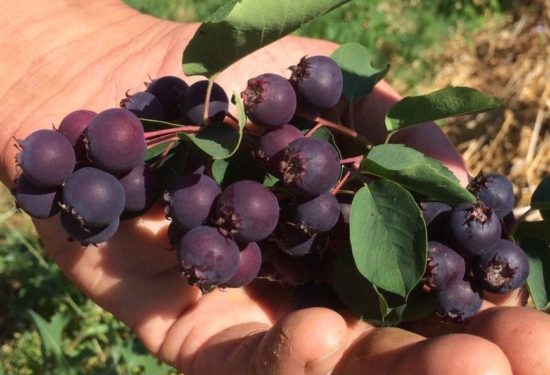
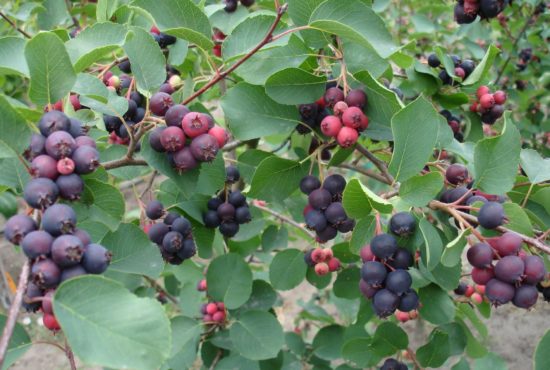

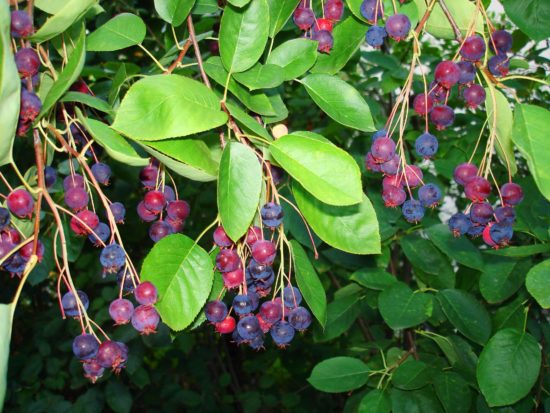
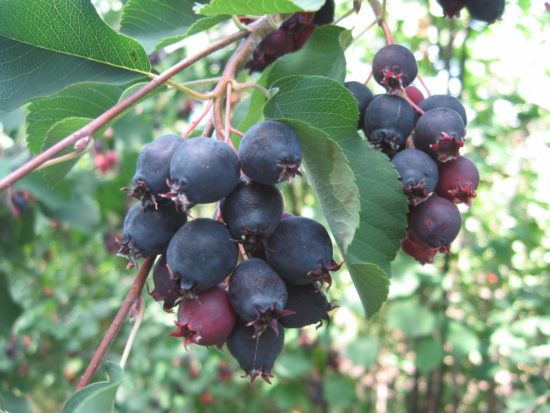
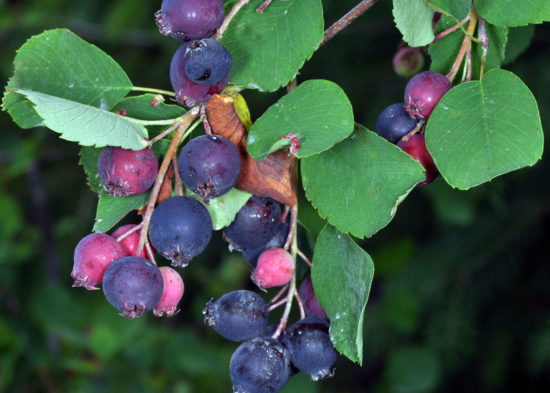
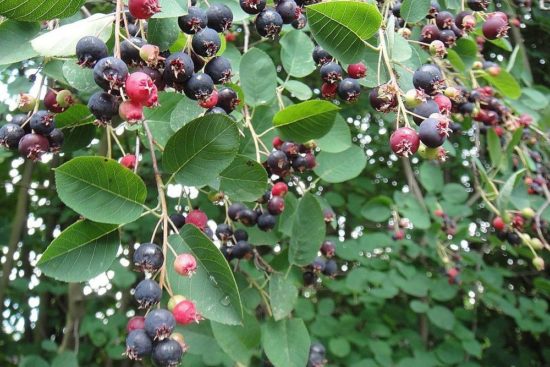
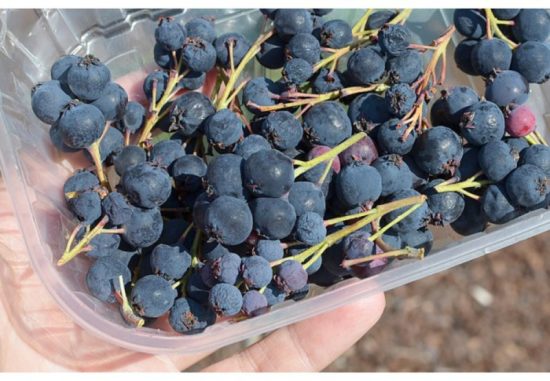
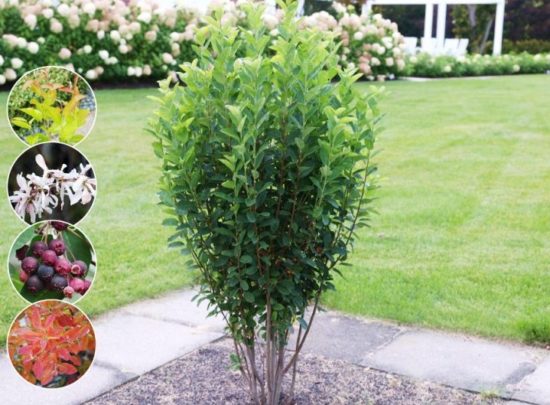
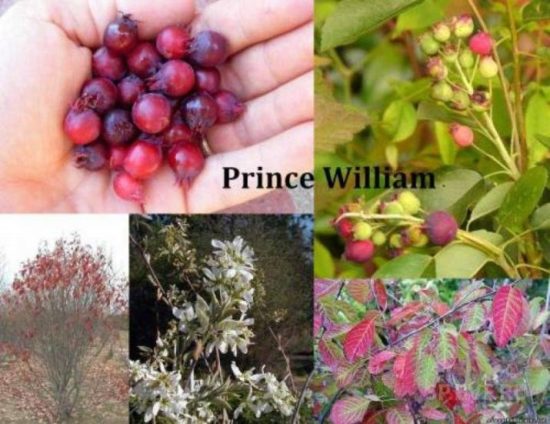

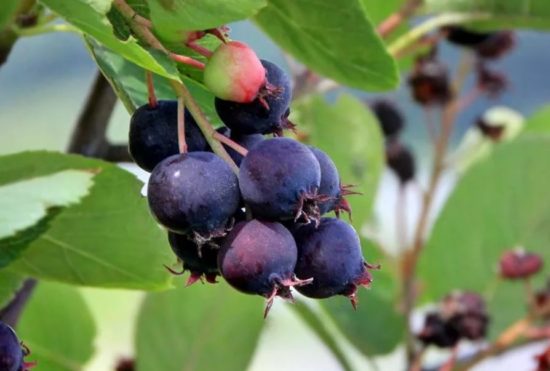
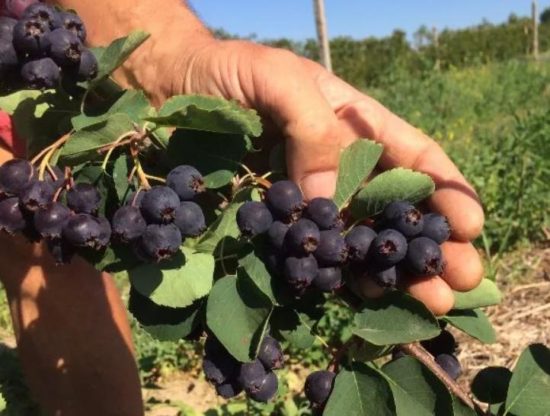
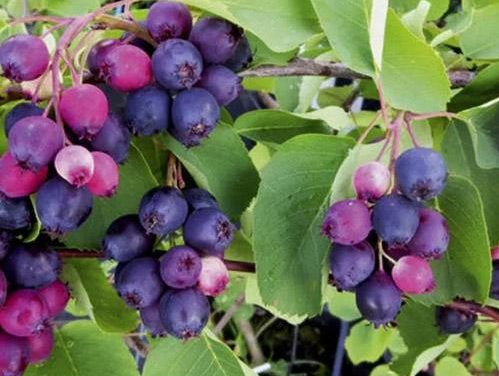
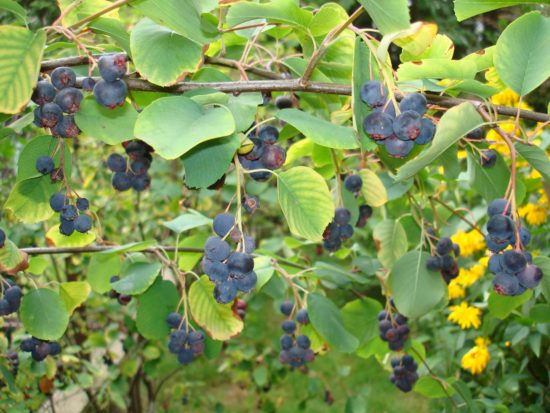
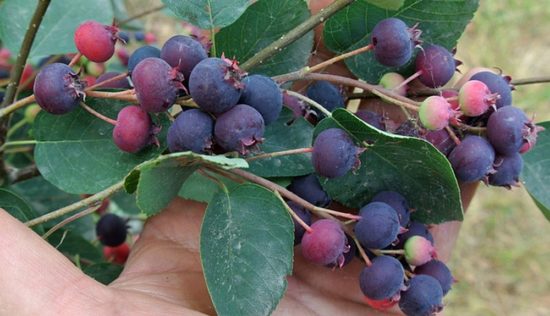
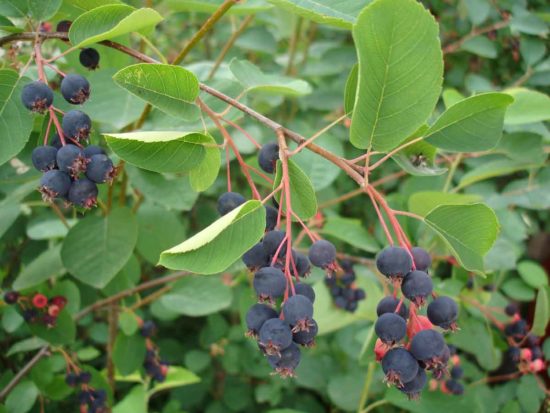
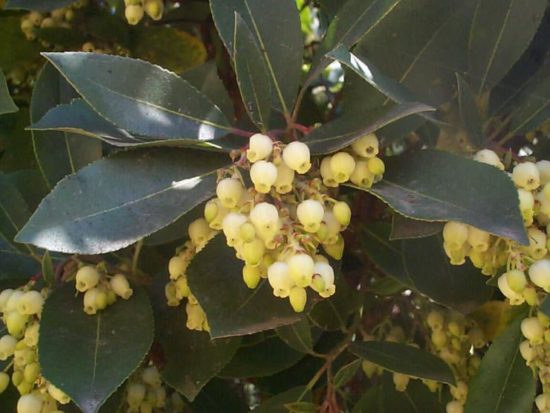
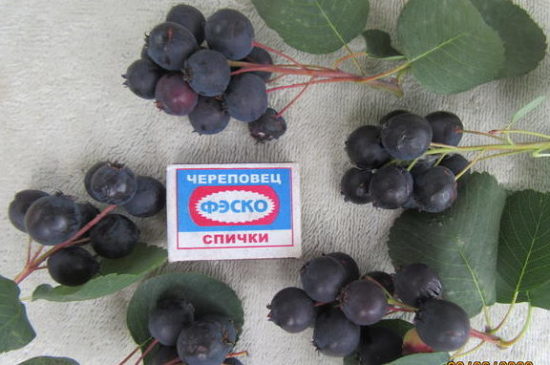


 CUCUMBERS NEVER GET SICK, I'VE BEEN USING ONLY THIS FOR 40 YEARS! I SHARE A SECRET WITH YOU, CUCUMBERS ARE LIKE THE PICTURE!
CUCUMBERS NEVER GET SICK, I'VE BEEN USING ONLY THIS FOR 40 YEARS! I SHARE A SECRET WITH YOU, CUCUMBERS ARE LIKE THE PICTURE! You can dig a bucket of potatoes from each bush. Do you think these are fairy tales? Watch the video
You can dig a bucket of potatoes from each bush. Do you think these are fairy tales? Watch the video
 How our fellow gardeners work in Korea. There is a lot to learn and just fun to watch.
How our fellow gardeners work in Korea. There is a lot to learn and just fun to watch. Eye trainer. The author claims that with daily viewing, vision is restored. They don't charge money for views.
Eye trainer. The author claims that with daily viewing, vision is restored. They don't charge money for views. A 3-ingredient cake recipe in 30 minutes is better than Napoleon. Simple and very tasty.
A 3-ingredient cake recipe in 30 minutes is better than Napoleon. Simple and very tasty. Therapeutic exercises for cervical osteochondrosis. A complete set of exercises.
Therapeutic exercises for cervical osteochondrosis. A complete set of exercises. Which indoor plants match your zodiac sign?
Which indoor plants match your zodiac sign? What about them? Excursion to German dachas.
What about them? Excursion to German dachas.